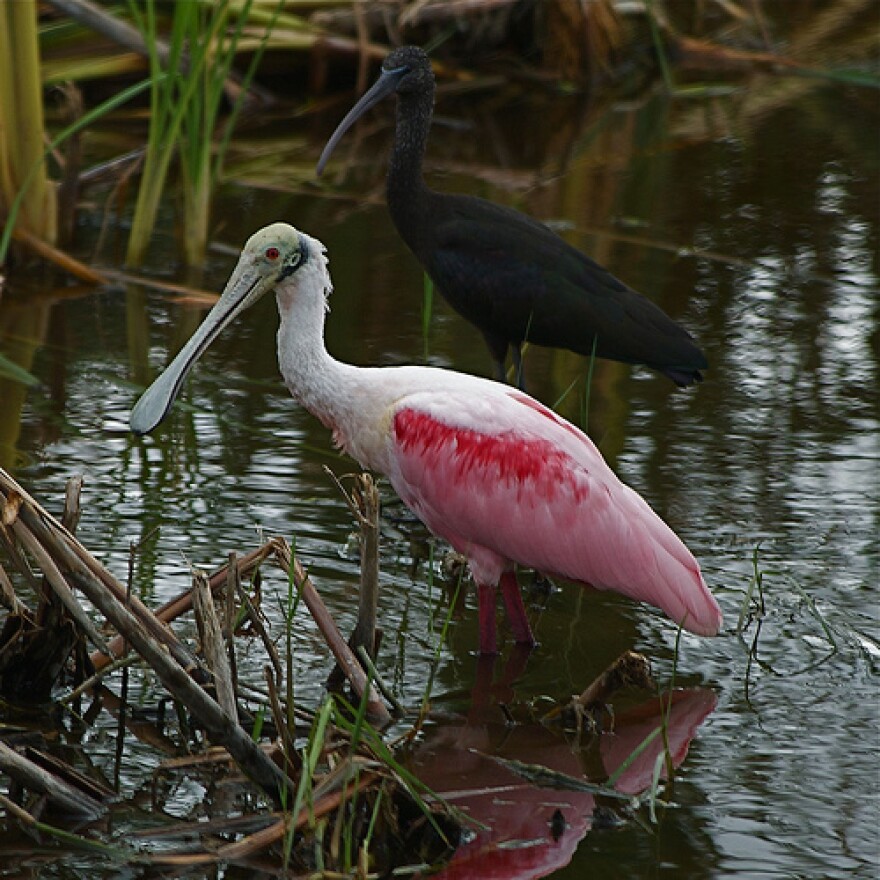Breeding numbers were down for some bird species for the third straight year in a row in the Everglades.
Nesting numbers for wading birds fell by 38 percent compared to the past decade. That's according to an annual survey compiled by the South Florida Water Management District.
Curtis Morgan reports on the environment for the Miami Herald. He writes that seesawing water levels are to blame:
Back-to-back drought years reduced the numbers of tiny fish that provide food for many birds. Then, in the prime nesting month of April, untimely storms disrupted seasonal drying cycles that concentrate fish and other tiny prey, which wading birds depend on to feed their fast-growing and voracious chicks. As rising waters disperse prey, Cook said, “the parents are just unable to keep up with the demand,” and many chicks don’t survive.
Species like the tricolored heron and wood stork suffered worse drops than others last year. Wood storks are on the endangered species list.
The population of wood storks, long classified as an endangered species, has expanded across the southeastern United States to the point that federal wildlife managers last month proposed proposing reducing its status to the less-severe “threatened” category. But for the fifth time in the past six years, there were no wood storks nesting in what once was the largest breeding colony in the United States — the Corkscrew Swamp Sanctuary in Southwest Florida. Jason Lauritsen, director of the Audubon-managed Corkscrew sanctuary, said the storks’ disappearance from a prime breeding ground points to a troubling disruption of seasonal cycles that flood and drain marshes that are critical to wading birds. “If we hope to recover the largest historic colony in the U.S., immediate focus must be put on restoring and protecting short-hydroperiod wetlands in the western Everglades,” he said.
Nesting numbers are considered an important measure of the health of the overall system. Environmentalists said the recent dips point to the need to move forward on Everglades-restoration projects.
On the plus side, Morgan writes, droughts seem to spark booms in the bird population a few years afterwards.
You can read Curtis Morgan’s full story here: http://hrld.us/XBiJ6o


